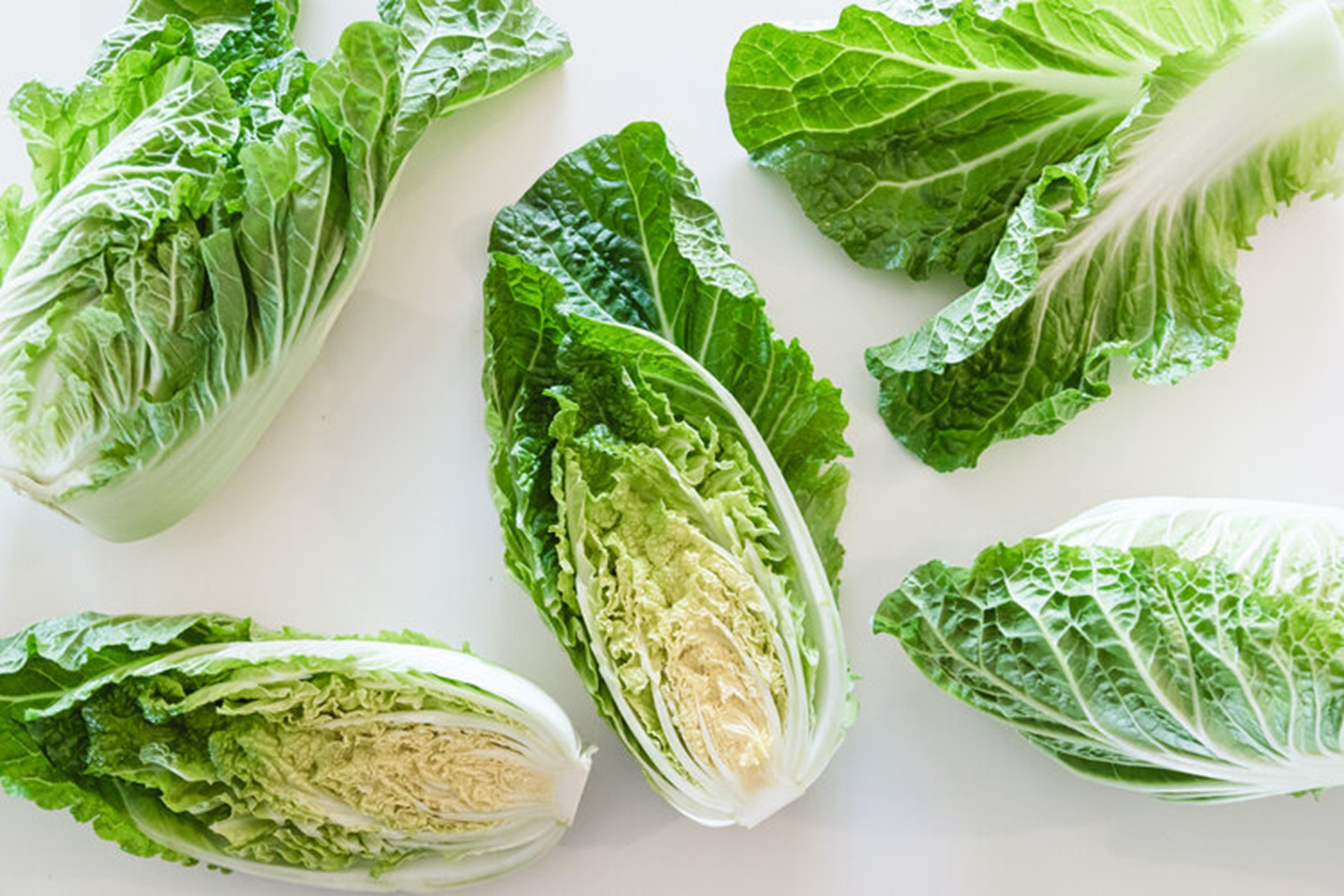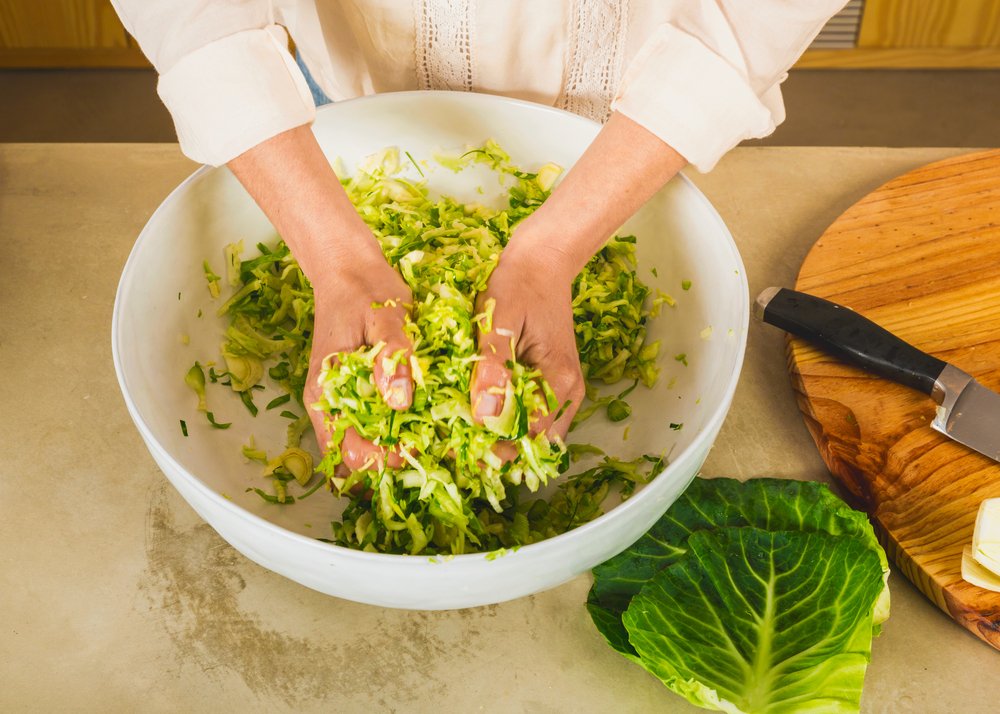Everyone enjoys exploring the cultural roots of different cuisines. With an almost endless list of culinary offerings to choose from, we can share and appreciate tastes from around the globe.
Napa cabbage kimchi is an excellent example of how one nation's food tradition, steeped in history, can travel across the globe.
It's a basic but beloved Korean dish that belongs in both home and commercial kitchens.
Here's everything you need to know about making fresh cabbage kimchi, including how to ferment it, keep it fresh for months and incorporate it into your favorite recipes.
What Is Kimchi?
There are several types of banchan, a traditional Korean side dish, but kimchi stands out as the most popular.
Baechu kimchi, made from Napa cabbage, is a time-honored staple. Food historians believe it originated over 3,000 years ago.
Back then, preserving vegetables helped keep plates full through harsh Korean winters.
Fermentation was a practical way to prep food for long-term storage. The simple process also kept kimchi table-ready for months.
Over the centuries, the pickled cabbage quietly migrated around the world.
However, kimchi gained international acclaim during the 1988 Seoul Olympics. Despite a few official misgivings, its unique taste, aroma and texture were a big hit.
What Is Kimchi Made Of?
When prepared according to tradition, kimchi is made from whole heads of Napa cabbage.
Also known as Chinese cabbage, Brassica oleracea is almost the only ingredient. It's flavored and fermented with a variety of seasonings and vegetables, but these are the basics:
Coarse sea salt
Glutinous rice powder
Red chili pepper flakes
Minced garlic
Grated ginger
Sesame seeds
Minced vegetables
Other ingredients can include minced shrimp, fish sauce, kelp broth, brown sugar and finely chopped onions, carrots and radishes.
Seasoning a batch of kimchi is a matter of personal taste. Customizing the recipe is part of the fun.
You might wonder, "Why is Napa cabbage used for kimchi?"
The short answer is easy. It's a centuries-old tradition. The practical answer is simple too. Napa cabbage is much better suited to fermentation than other types of cabbage.
What Does Kimchi Taste Like?
The flavors in kimchi are up to the chef, whether at home or in a restaurant.
However, the taste always starts with fresh Napa cabbage. The crisp, oval-shaped cruciferous plant is prized for its sweet, subtle flavor.
Finished kimchi has a crunchy texture with spicy, pickle-like overtones. Depending on your choice of seasonings, it can be sweetly sour or fiery hot.
Kimchi can serve as a mouthwatering condiment, fill out a meal as a side dish or complement flavors in an entree.
How to Make Kimchi With Napa Cabbage at Home
To make your own version of classic kimchi, start with one head of fresh Napa cabbage, available year-round in grocery store produce aisles. Look for compact heads with light green, tightly wrapped leaves.
1. Slice and Salt
In a large, deep bowl, mix 1 cup of salt with 8 cups of water. Slice the cabbage into quarters lengthwise, and soak in the salt bath for three or four hours.
Pro Tip: Coarse sea salt works best because it develops flavors better than table salt.
2. Combine Seasonings
Use a blender or food processor to combine your choice of spices. This ensures a powdered mix of the dry ingredients that are essential to making kimchi paste.
3. Mince Vegetables
Finely mince vegetables, such as radishes, carrots, garlic and onion. You might want to include chives or mustard greens. Gently blend everything in a large mixing bowl.
Pro Tip: Many traditional kimchi recipes call for the addition of fish sauce or fermented shrimp.
4. Create Kimchi Paste
Create kimchi paste by sprinkling and slowly hand mixing your seasonings into the minced vegetables.
Wear kitchen gloves to avoid burns from hot spices, such as red pepper flakes or chili powder.
5. Stuff Cabbage Quarters
Remove cabbage quarters from the salt bath, rinse and drain. Remove as much water as possible.
Starting from the outside and working inward, stuff your kimchi paste between individual cabbage leaves.
Pro Tip: Use one of the large outer Napa cabbage leaves to tightly wrap and secure each stuffed quarter.
6. Start Fermentation
As you place the cabbage in glass jars or airtight containers, firmly press on each quarter before sealing.
Store the fresh kimchi in a cool spot for a day or two, and then move it to the fridge.
Pro Tip: You can enjoy Napa cabbage kimchi right away, but its distinctive flavors develop best after fermenting in the refrigerator for a couple of weeks.
7. Feel Free to Freeze
As kimchi continues to ferment in the refrigerator, its texture and taste lasts for several months. Over time, the flavor becomes sharper, depending on the ingredients used in your paste.
You can store portions of fermented kimchi in zip-top plastic bags or airtight containers in the freezer. Its taste and texture should last for about three months.
How to Prepare Kimchi in the Restaurant
If you're a restaurant owner, manager or chef, keep pantries stocked by purchasing through a trusted supplier.
Here at Hitchcock Farms, we grow and ship fresh vegetables to foodservice operations across the country and Canada.
You can always be sure of crafting customer-pleasing kimchi when you start with our premium Napa cabbage.
These are just a few ideas for incorporating Napa cabbage kimchi into different dishes on your restaurant's menu:
Make brunch better with by folding kimchi into fluffy scrambled eggs.
Add tangy spice to steamed rice dishes with finely chopped kimchi.
A little kimchi lends a big boost to the flavors of different braises.
Reimagine favorite pastas bathed in a sauce of caramelized kimchi and butter.
Dress up plain sour cream or mayonnaise with a splash of kimchi brine.
3 Delicious Napa Cabbage-Based Kimchi Recipes
It's so good straight out of the jar. Napa cabbage kimchi also turns traditional dishes into kitchen classics and reinvents long-time favorites. It even adds snap to casual dining.
These three recipes are delicious examples of why kimchi-based dishes belong on your list of homemade favorites.
1. Traditional Kimchi Fried Rice
Put your love of fresh vegetables into a satisfying medley of basmati rice and kimchi.
The fermented cabbage pairs perfectly with the spicy, nutty overtones of the rice. Zucchini, carrots and mushrooms complete this very vegan entree.
2. Spicy Kimchi Beef Stew
Recreate your best beef stew recipe with Napa cabbage kimchi, fiery Korean hot pepper paste and red chili flakes. Onion, garlic and soy sauce complete the flavor profile.
This hearty stew goes from prep to table in less than an hour.
3. The Ultimate Kimchi Bacon Burger
Liven up your next cookout by topping grilled burgers with bacon and kimchi. The fermented cabbage serves as an exceptional condiment that's sure to impress friends and family. Be prepared to enjoy multiple compliments to the chef.
Hitchcock Farms: Your Supplier for Premium Napa Cabbage
If this is your first time making Napa cabbage kimchi at home, blend your cooking talents with your good taste. Get creative with spices, reinvent traditional dishes, and create new classics.
It's fun, satisfying and a joy to share.
We enjoy sharing information, recipes and tips you can use in your kitchen every day. It's also our pleasure to serve up ideas for foodservice professionals in all types of settings.
As one of California's most established produce growers, packers and shippers, we're committed to serving you with our best.
You can always depend on Hitchcock Farms to supply the very freshest vegetables from our fields to your tables.







